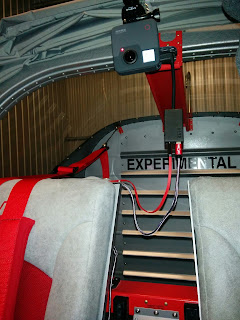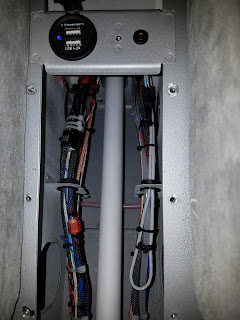Second oil change at 35 hours. The first was at 12.6 hours. Everything with the oil, filter and screen were fine. It's nice not to have any surprises with those.
I found a few tiny leaks in the oil return lines. See below. I snugged the hose clamps up a bit and will see how they look at the next oil change.
The starter released a bunch of grease onto the snorkel. Below is where the bottom of the starter meets the snorkel. I'll keep an eye on things. Update 20-May-18: The starter failed at 43 hours.
I found a tiny fuel leak on VA-168 Sender Mount at the F 1/8 Pipe Plug. I disconnected the three items on that part of the sender and thoroughly cleaned out the Form-A-Gasket being very careful not to contaminate the fuel lines. I reinstalled everything and instead used high temperature thread sealant suitable for fuel.
The FF-00076 Sniffle Line Bracket was again broken. It broke before the first oil change too. I guess it can't accommodate the twisting of the engine on start? I replaced it again with a slightly different orientation. I'm not convinced it's even needed. Update 14-Nov-18: I fabricated a bracket from 4130 steel stock. See my post outlining my first annual.
I replaced the Adel clamp holding the aft end of the sniffle line with a MS21919DG9 since the DG10 wasn't holding it tight enough to prevent leakage where the FF-00082A Sniffle Line hose and FF-000083 Sniffle Line Extension mate (maybe my flare wasn't a good one). Below shows the area from page 49-18.
If you look closely, you can see that the original DG10 clamp is a bit loose. The DG9 offers a tighter fit.
Here's what the leak causes on the U-01013B Wheel Fairing Rear (back of nose wheel fairing).


















